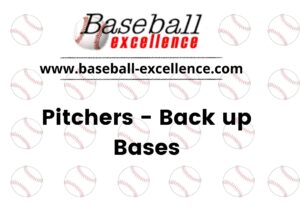Effective communication is essential for a coach. It is important for him to have a set of vivid, consistent verbal cues that reinforce in the player’s mind the correct physical and mental methods and techniques.
These little phrases should be short and concise. They should give the player a clear mental picture that he can remember and call on when needed.
A coach can use these at practice and in games where brief, precise phrases are needed. After a short time these buzz words become engrained in the player’s mind. Some of these the players will remember for life.
Most of the following phrases are Coach Grant’s and some are universal.There are also gestures with his hands he uses in certain situations.
We’ll give you these as a model. You may want to use others that you develop over time. The point here is that you use something. This is a very effective teaching tool.“Say thank you coach.” Coach Grant says this to a player when he has been given instruction that helps him succeed. For example a player taking batting practice may be dropping his hands and popping up 4 or 5 balls.
The coach will go over and correct his fault. The next pitch, the hitter ropes a line drive. Coach will say “Say thank you coach.’ The player will say, “Thank you coach.”
This helps the player remember the instruction the coach had just given him and helps reinforce the correct technique. It also reminds the player that the coach is there to help him and wants him to succeed.“Plenty of room.” The Coach uses this phrase when there is a runner on second base and he is letting him know to take an extra slide step towards third. There is no danger from a pick off attempt from the middle infielders. This allows the base runner to concentrate on the pitcher only. He knows the coach is looking at the middle infielders.
He also uses this phrase when a fielder approaches a fence to catch a foul fly ball. It lets the player know he can keep going toward the fence and he doesn’t have to take his eyes off the ball.“No doubles.” This is a call to the outfielders, usually late in a game or with nobody on and 2 out. The players move into a position that cuts down on the possibility of a ball rolling all the way to the fence.“Even with the bag.” A reminder to the third baseman in a bunt situation.“Yes yes-no no in the middle.” A Reminder to the second baseman and the shortstop with a runner on first base. If a ground ball is hit to one, the other tells him where to throw the ball. “No no” means throw to first; you don’t have time to get the runner coming in to second.
“Yes yes,” means to throw the ball to the other middle infielder at second base to get the force out.“Throw the ball out front.” (With physical movements showing the right way.) A young player who has a certain mechanical throwing problem such as a low elbow or ‘launching’ the ball too close to his head instead of ‘out front.’“Stay on top of the ball.” Another throwing or pitching fault. The player’s hand comes off the side of the ball.“0-2 Smart.” A verbal cue to the pitcher to remind him to throw the next pitch up and out of the strike zone. Never let a hitter beat you on 0-2. At times late in a game with a weak hitter at bat, coach will say ‘0-2 smart’ and make a wipe-off sign across his chest. The pitcher blows the ball by the hitter for strike 3.
This works well when the opposing coach is observant and after a while has figured out what 0-2 smart means.
“Get your butt under your shoulders.” A verbal point in correcting a common bunting fault.“The game is played one pitch at a time.” A teaching tool to keep the team focused on the game.“Close the deal.” A reminder to a pitcher that he has 2 outs and needs to refocus on that last hitter in the inning. Many a game has been lost with 2 outs and no one on base.“Play the game on your belly.” A reminder to a player to ‘lay out’ and give his best effort to catch the ball.“The game is not played on your knees.” See above.“Hurry!”(At the top of his voice.) A cue to a base runner, letting him know that there will be a close play at first base and he can make it with extra effort.“Break up a double play.” An obvious reminder that the runner must go hard into second base when a ground ball is hit.“Banana that.” An odd sounding phrase to an infielder to remind him to take a ‘banana route’ to field a slow hit ground ball. I have used that when hitting slow rollers to a group of youth players. They will talk to each other and giggle a bit. Guess what- they all take a banana route to the ball.“Through the ball!” A verbal cue to an infielder as he approaches a ground ball.“It offends me that you talk while I’m talking.” I love this one when you are talking to your team and a young player can’t stay quiet. Try this – it shuts everybody up.“You play, he’ll umpire.” To a young player who was called out on strikes and had that questioning look on his face.“Way to hack.” Words of encouragement that lets a young player know that he just took a good hard swing (and miss) at the ball. Also a reminder that he be aggressive.“Stick it.” A reminder to the catcher to firmly hold the pitch in the strike zone instead of letting the force of the throw take the glove out of the strike zone.“Freeze on a line drive.” A reminder to base runners.“Way to battle.” The hitter is fighting off 2 strike pitches.“Above your hands.” The batter just swung and missed a high pitch. The coach can also place his hand above his head as a silent observation.“Good at bat.” Stated encouragement to a hitter who may have had a quality at bat but didn’t get a base hit.“Look for something “up” you can drive.” A runner is on third base, the infield is in and the coach wants the hitter to drive the ball into the outfield where a fly ball will bring in a run.”Find the outfielders.” To remind the runner on second to locate the outfielders’ positions.“Be hard back there.” With runners on base or 2 strikes on the hitter and a curve ball the next pitch, the coach is reminding the catcher to block the ball in the dirt.
Words have power. They have the power to teach effectively. You will want to use your own phrases, but whatever they are, use phrases that paint vivid mental pictures, are short and sweet, are easily understood and get your message across.
“When you wish to instruct, be brief; that men’s minds take in quickly what you say, learn its lesson, and retain it faithfully. Every word that is unnecessary only pours over the side of a brimming mind.” …Cicero




